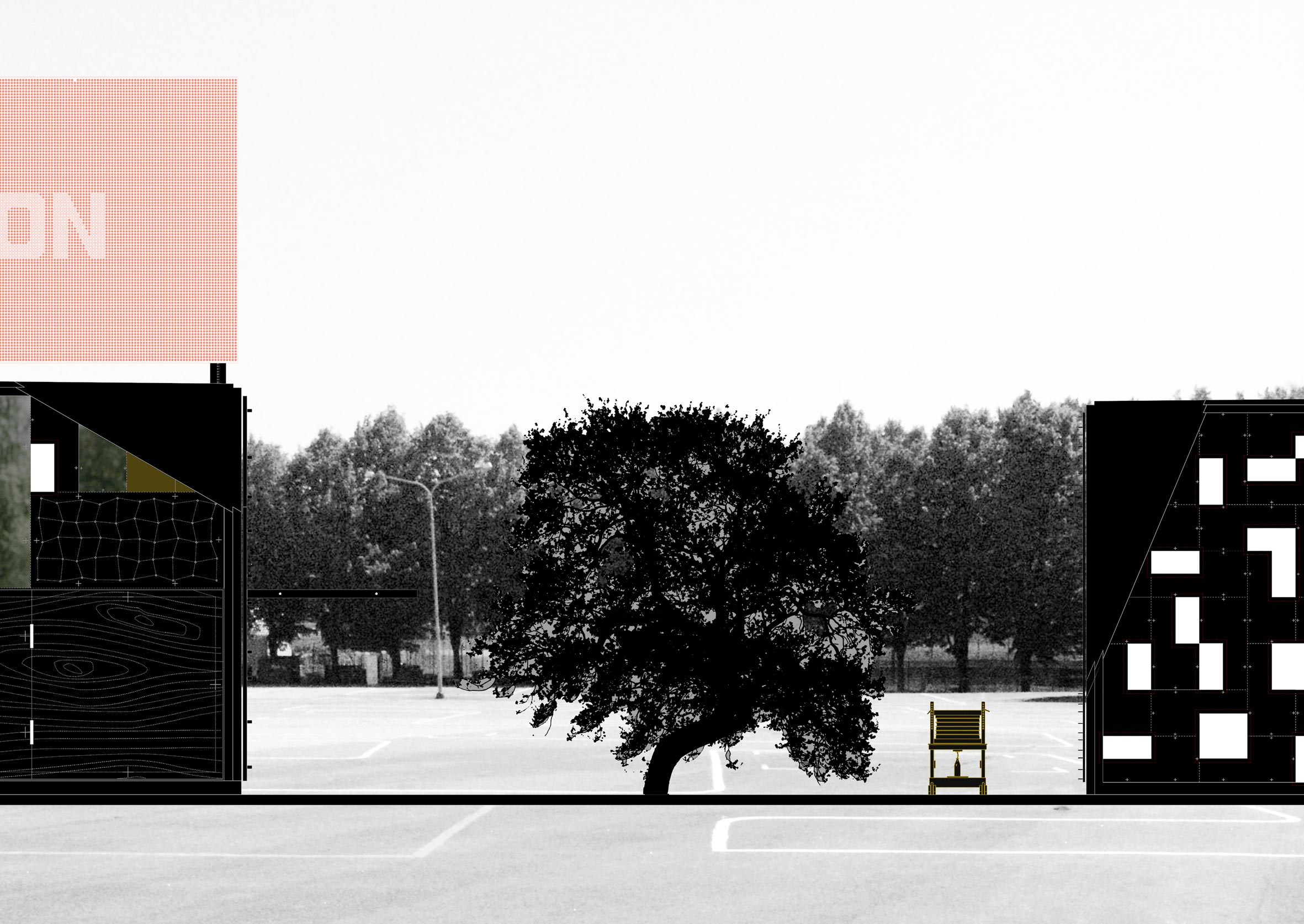Hunstad

Hunstad, Brösarp, Sweden
Transformation of road station into gallery, restaurant
and studio etc. Construction of 17 guest houses for artists
and researchers
Category: Commission on behalf of the Danish Arts Foundation,
The Committee for Architecture, 2008
Status: Realisation 2009-2011
Collaboration: Architect Christina Capetillo
Curators: Annesofie Becker and Martin Christiansen
Assistant: Kalle Hjalmarson
Client: NEON Gallery
Location: 277 50 Brösarp, Sweden
The town as a condition – a new type of village
If instead of talking about country/town or culture/nature
you see all things created by culture as a continuous
condition with different degrees of organisation, density
and articulation, the village may be defined as follows:
————
A village is an organisation of houses and programmes of
a certain size with a certain density and in a certain number, located between something else – suburbs may be defined
as another organisation of houses and programmes of a
certain size with a certain density and in a certain number – the open cultural landscape may be defined as a third
organisation of houses and programmes of a certain size with a certain density and in a certain number.
————
The town’s life and life in the town take place between order and chaos, between repetition and coincidence, between
memory and moments.
————
The object of the new village is to create an unhierarchical field that is not a grid, and within this field to create the greatest possible tension between a limited number of units of roughly the same size – an ‘anti-entropic’ town model?
————
The project is based on the idea of creating a small town
of 17 houses around the gallery where artists, researchers and
visitors can stay for short or long periods of time. This raised
an important, fundamental question: What does it take for something to be a town?
————
It was necessary to develop a set of new guidelines – a
set of alternative construction regulations for a sparsely
populated urban condition, e.g. a village or a suburb, in
order to answer the question.
————
According to Statistics Denmark, a village is a place with more than 200 and less than 999 inhabitants. After several trips
to minor villages, we discovered that it was not the number of inhabitants, but rather how much was going on in the
individual places that made them towns.
————
The social interaction and ‘dependency’ that emerge via
a number of elementary programmes in a town, e.g. a school,
a shop, a hairdresser etc., combine to make the houses form
a small society, which opens up and creates a space between
the regional infrastructure and the private plot of land. Without various functions, it is merely a densification of
houses, and a both functional and architectural homogeneity surfaces whose existence is maintained solely by commuters.
Hunstad was developed from a general concept of ‘reliance’ –
a degree of interdependence among the residents, which
creates relational spaces between houses and people.
It has been important to develop an architecture, which by
simple means can build up an architectural tension between
simplicity and complexity, and which contains a series of
simple programmes that create opportunities for the individual resident to participate in and contribute to a social community.
————
For this reason, each of the 17 houses is different from
the others, though built on a common construction system, and all of the houses contain simple programmes, which
offer simple services and activities to the community.
